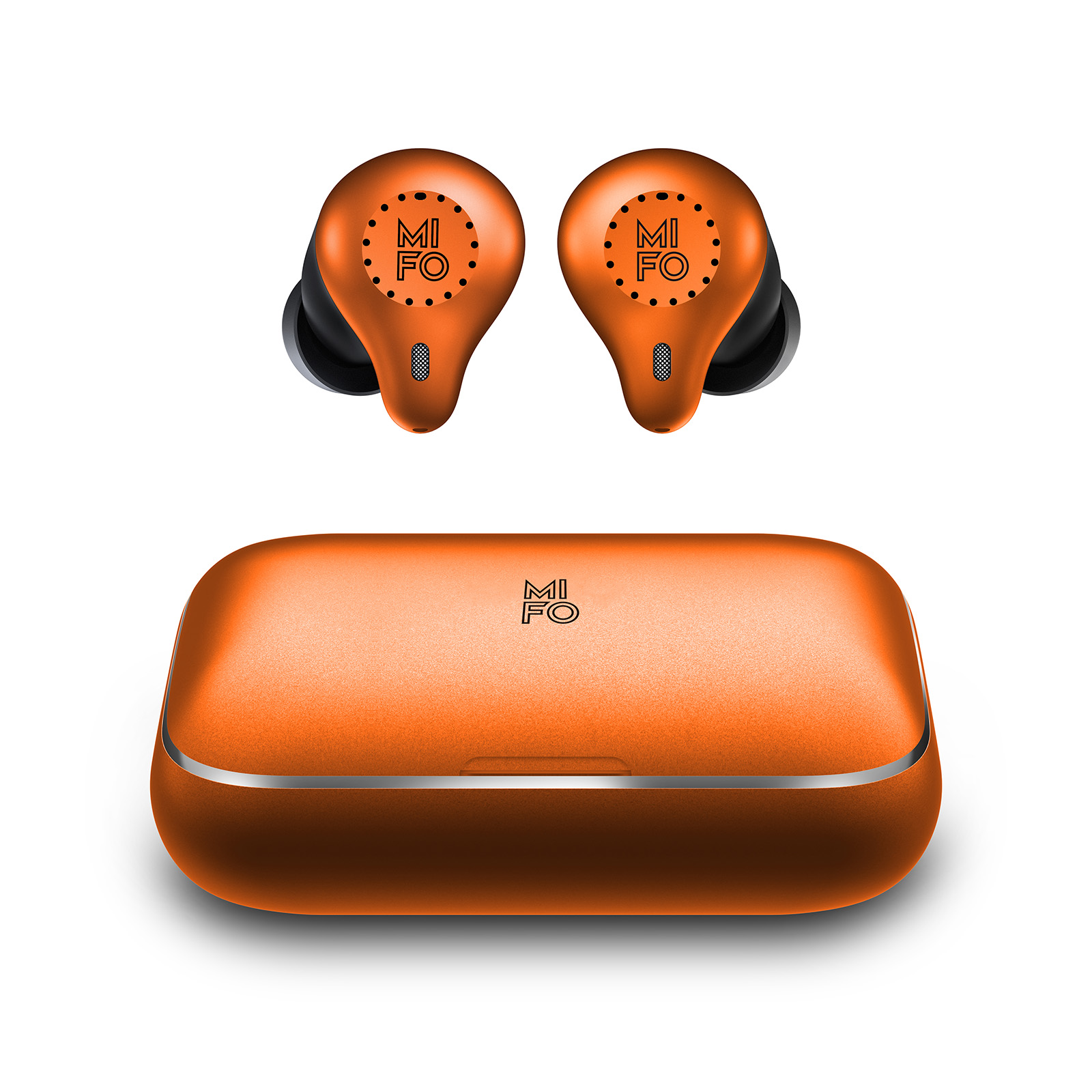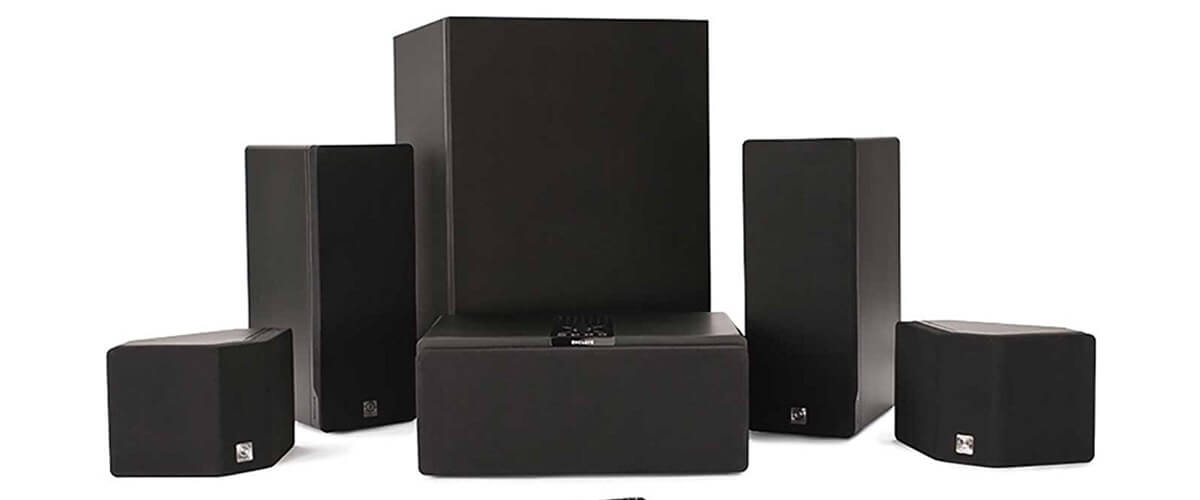The future of wireless technology is getting closer, and we’re on the cusp of a mind-blowing change. A new generation of wireless devices with dramatically upgraded chipsets and software is about to push the boundaries of what we consider connected, and everything from Bluetooth earbuds to smart speakers will be forever altered. It’s all very sci-fi to think about. Tiny earbuds that have hours – and perhaps days – of battery life. Devices that talk to each other over long distances without WiFi. Amazing advances in wireless data speeds and interlinked technologies. These exciting scenarios will all become reality very soon, and we’re here to dig in to the players and technologies coming down the pipe.
The Best New Wireless Devices and Trends for 2022
Article Contents – Click to Jump:
- Bluetooth 5 provides a boost to the Internet of Things
- WiSA wireless technology is WiFi taken to the next level
- Smart TVs are finally getting sophisticated enough to be awesome
- Voice search is invading everything except your toaster (for now)

Bluetooth 5.2 technology will be a wireless coup for any Bluetooth device
Bluetooth has become a ubiquitous standard for wireless devices. Offering relatively low power consumption, small chipsets, reliable enough communications protocols, and a catchy name, Bluetooth has found it’s way into our hearts. But it’s not without problems. Range is limited. Signal strength is unreliable, and often cuts out. And battery consumption is noticeable, especially on devices like true wireless earbuds where 50mAh batteries are as big as is realistic.
Bluetooth uses a combination of hardware and software to create the lean wireless protocol. But the current iteration of Bluetooth is about to be replaced by a next generation chipset. Bluetooth 5 isn’t just an incremental number up, it’s a small revolution on tiny, low power chip. And it’s well timed. ABI Research predicts any day now there will be 48 Billion devices connected to the internet. Of those, 30% will likely use Bluetooth.
From Bluetooth SIG:
Bluetooth 5 is a transformative update that significantly increases the range, speed, and broadcast messaging capacity of Bluetooth applications and makes use cases in smart home automation, enterprise, and industrial markets a reality.
Wireless devices will see double the data rate with Bluetooth 5.2
Data packets are getting larger and larger as our devices record video, take high resolution pictures, and increasingly communicate automatically. That presented a problem for Bluetooth… Until now! Bluetooth 5 will double the data transmission rate of current Bluetooth 4.x devices. That means you will be able to do completely new and potentially life changing things like connect to two Bluetooth devices at the same time. Chaining devices in this manner at a basic level will allow you to worry less about connecting and disconnecting from a Bluetooth speaker and a headset, for example.
But Bluetooth 5 will also allow you to use devices together in new and amazing ways. On a call with your Bluetooth headset? You could theoretically continue using the mic on your headset for talking while transferring sound to your connected speaker, allowing for others to easily hear the conversation without interrupting call clarity. We expect features like this to shake up our list of the best Bluetooth headphones for making calls.
A more efficient chipset means longer Bluetooth battery life
I think one of the most frustrating things about Bluetooth 4.x devices is battery life. Good news, the wait for a solution is over. Bluetooth 5 will extend battery life of small devices dependent on a tiny battery by 20-30%. Increased processing power also means that those devices can do a lot more. In our latest roundup of the best Bluetooth earbuds for battery life, we found the top spots belong to Bluetooth 5 devices. It’s an unsolvable problem with the current iteration of Bluetooth. Batteries have gotten very efficient, and so it’s really a size game. Bigger batteries equal more power. But small Bluetooth headsets don’t have room for big batteries, nor would consumers want their sleek headphones and earbuds to be ruined by large and heavy batteries.
Battery life expectations are sure to be changed forever when a new slew of devices hits the US market. China is already enjoying early access to Bluetooth 5, and all signs indicate it’s becoming the new standard in portable power management. In fact, Bloomberg analysts recently estimated one in six Bluetooth devices in China now uses a Bluetooth 5 chipset.

Above: The Mifo O5 Plus Gen 2 Touch, recently named best wireless earbuds in Australia featuring Bluetooth 5.2 technology.
Bluetooth 5.2 will offer 4 times the range without using additional power
It’s common these days for devices to be farther apart. Connected speakers, smartphones, headphones, and connected TVs are all in different parts of the home. These devices can all “talk” to each other now thanks to WiFi, but Bluetooth 5 will add an entirely new dimension to that experience. Thanks to low power transmission of signal, your devices will be more aware of where each other are, and will be better about responding to your needs before you know you need something. As an example, you might want the devices in your home to wake up when you arrive and power down when you leave. Before Bluetooth 5 this would require a complex smart home setup. But if all your devices use Bluetooth 5, in theory the process is now totally effortless.
That range also comes with additional benefits. If you’ve ever tries using true wireless earbuds (where each earbud has a separate Bluetooth chipset and battery) you know the pain that comes with pairing, signal issues, and synchronization. Now thanks to a clearer signal and longer range, you’ll be less likely to experience drops, errors, and simple human error mistakes like pacing too far away from your smartphone while using earbuds to have a phone conversation. It may not seem like a big deal, but this feature of Bluetooth 5 will surely be one of the most appreciated by frequent users of Bluetooth devices.
Bluetooth 5.2 can help advertising become a lot smarter
While it may not seem like a “feature”, better advertising is actually a good thing. There’s no way around it: You’re going to be exposed to ads literally everywhere you go. Online, offline, it doesn’t matter. But if the ads are for products and services you need and want, it takes the sting out just a bit. Bluetooth technology interacts with beacons placed around cities everywhere. These beacons relay advertising data back to companies that package and sell it.
As unappetizing as it sounds, you can’t really avoid it aside from keeping Bluetooth and WiFi off at all times. But ads are getting smarter and smarter, and Bluetooth 5 will contribute to that intelligence by providing more robust and accurate location data. This transmission of data through wireless devices will also be less impactful on battery life and smartphone speed thanks to the other benefits mentioned above. Sure, we’re putting a little spin on what many consider an invasion of privacy, but at least after Bluetooth 5 becomes mainstream that invasion will be just a little less annoying.
WiSA audio technology for wireless devices is already in market, and about to get a lot better
We’ve already reviewed the details of the best wireless surround speakers of 2018 and experienced the magic of the WiSA standard first hand. It’s WiFi for sound but taken to the next level, and it’s about to be integrated into a lot more audio devices.
WiSA doesn’t interfere with other wireless signals
Thanks to operation on a totally different bandwidth, WiSA won’t clog your WiFi or Bluetooth airwaves. So you can download or stream without worrying about impacting sound quality, delay, or connectivity. That’s something that can’t be achieved with the current series of wireless speakers. Sonos is a prime example, as there are many complaints of a busy WiFi network or bottlenecked internet connection hampering streaming audio.
The Wireless Speaker and Audio Association (WiSA) recently announced that new audio companies were joining the standard, bringing even more devices offline. For example, devices like amps and concert speakers may soon be able to go wireless without risk of signal degradation or quality in busy arenas where thousands of mobile devices are being used simultaneously. Imagine rocking out without wires!

WiSA Wireless Speaker Set
Devices on a WiSA network can communicate back and forth at the same time seamlessly
The coolest thing about WiSA is the idea that multiple devices can wirelessly stream data back and forth all at once. That means 7.1 surround sound systems work perfectly with no lag or delay between what is being shown on screen and the sound reaching your ears. You won’t have to rip up walls to place that dream surround sound system in your man cave. Save that rent deposit for the new system, as prices are still fairly high for these new wireless devices.
WiSA may also enable a new kind of device to be placed where none could previously be fit. That may be in your car, throughout your home, or even in expensive to retrofit spaces like airplanes. Anywhere a device can go, WiSA can deliver the data. Don’t look for it to replace WiFi any time soon, the WiFi standard is still the best option for everyday smartphone, tablet, and laptop wireless devices. You can also hot swap or add and remove devices any time, meaning that 7.1 surround sound setup can quickly become a 5.1 by turning off a couple of speakers.
WiSA can transmit data between any device using the standard
When it comes to speaker systems, you have to pick your brand and stick with it in today’s world. But in a WiSA future, you can mix and match to your heart’s content. WiSA devices are built for interoperability, and if one brand uses the standard it must be compatible with all the others. If you prefer a certain type of speaker for your rear audio, but want a differently branded sound bar you’ll be in luck. It’s as simple as turning on those devices and pairing them with your setup once. WiSA handles the rest! As a bonus, WiSA receivers will pair with Bluetooth 5 devices, allowing true wireless streaming from anywhere you can achieve a Bluetooth signal.
Smart TVs are finally getting good
The first smart televisions made big promises, but delivered clunky, nearly unusable interfaces. Couple that with the fact that every TV brand has a totally unique remote, menu, and feature set and it’s pretty much not a part of the consideration. But that’s about to change with standardization and a new wireless devices ecosystems.
Operating systems on smart TVs are consolidating
Smart TVs are integrating third party operating systems and hardware into their standard feature set. Roku is a prime example, and their proprietary Roku TV operating system is now being integrated into the current and next generation of Sharp, Hitachi, Insignia, TCL, and Hisense smart TVs. If you’re used to having a Roku, there won’t by any real change when you upgrade to a smart TV with Roku TV integrated. That’s awesome news – all you have to do now is unbox and log in to your Roku TV account.
If you aren’t planning on upgrading your TV, the latest Roku Streaming Stick offers 4k over Wifi networks and plugs directly into any smart TV with a USB port. Look for Roku to add even more wireless features to the Streaming Stick in the future. You can also get Google’s Chromecast or Amazon’s Fire TV stick to create a similar effect. Each of these wireless devices has pros and cons, but they all offer a plug and play wireless upgrade for older smart TVs.
Brand new processors make TVs more like powerful computers
New low power, high speed computer processors are being integrated into smart TVs at faster and faster base speeds. That means wireless controls like remote selections and voice commands will work faster and more accurately. Menus work like they do on a real computer and additional features such as apps and streaming work without lag. That’s a big change from the last few years when you could practically go out to lunch before your TV loaded your selection. Intel is providing many of these new chipsets, but there are a few other manufacturers entering the smart TV space as the category continues to evolve toward full fledged computer power.
More intuitive wireless remotes add useful features to the wireless devices ecosystem
The age old remote control. It hasn’t changed much in the last few decades. Sure, you can argue that accelerometers and click wheels have been added for ease of use, but those features add marginally better innovations without bringing something truly new to the table. As processing power and voice capabilities heat up, be ready for a new class of remote that acts as a hybrid smart TV control, microphone for voice commands, and smartphone extension. That’s right, now that the Internet of Things is becoming a reality, the remote may be a pivotal living room device.
You may want more than one, because a device with that kind of power is bound to cause a little family competition on movie night.
Voice search may become the new way you find products and services
It’s been a science fiction dream for many years: Just call out anything you want to know, and a hyper-intelligent computer delivers an answer. So far we’ve seen Apple’s Siri, Google’s Voice Search, and Amazon’s Alexa take the market by storm. And while those devices have been helpful for a number of things
Device native voice search without the cloud
One of the most glaring drawbacks of current voice search is the delay between your voice command and a response. While minor, it isn’t the best experience when you’re waiting on an answer, and certainly isn’t like speaking to another human. The problem is the enormous amount of data it takes to process a voice command. Machine learning algorithms working 24/7 decode and respond to voice commands while learning how to get better. Over time, this means that voice interaction is supposed to be seamless.
Well, that time is nearly here. With smart speakers and voice features moving to every mobile operating system and browser, voice is everywhere. For the first time, those algorithms are finding their way onto the devices they control. That means new devices with powerful chipsets will be able to process your commands immediately, yielding a natural, immediate response to commands. It will be very similar to speaking with a real human, and kind of creepy at the same time. Look for these devices to be coming down the pipe once the latest mobile processors we covered above find their way to market.
Like it or not, smart speakers are making their way into everyone’s home
eMarketer recently found one in four US households has a connected speaker device. Couple that with data showing nearly 50% of US households have a subscription to Amazon Prime, and the obvious benefits of voice search start to add up. Complaints about smart speakers and other wireless devices listening to us day and night have made headlines. Despite that fact, it seems the market is undeterred. More people than ever before rely on smart speakers to help them run the household. From reading off recipes to “play smooth jazz”, we’ve gotten used to our drum-shaped personal assistants.
The Economist recently predicted that by 2022, nearly 85% of US households with have access to wireless devices that are capable of interacting with humans. That means that our home life will look and feel dramatically different than it does now. Entire houses are being set up to run on connected devices paired with smart speakers as the central command unit. Amazon and Google recently released smaller extension modules for their core smart speakers, so that every home in the room can access voice commands. Not only that, but smartphones are increasingly able to pair with smart speakers, acting as remote microphones that can send commands home remotely. Forget to turn the house lights off? No problem just ask your smartphone to do it for you.
Conclusion: 2022 is the year for wireless devices
We have big hopes for 2019 and the Internet of Things. Wireless technologies are converging to create a lifestyle ecosystem the likes of which the world has never seen. Households and everywhere in between are quickly becoming hubs of technology, capable of managing themselves around your coming and going. Pair that with devices that are increasingly controlled by voice and your location, and it’s a recipe for a much more seamless experience where reality is blended with technology.